
Zeiss 710 laser scanning confocal microscope
20160405
So the following turns out to be an exercise in futility because somebody pointed out that I skipped a step of essential math to correct for refractive indices of different materials. Multiplying the glass distances by 1.5 and the water distances by 1.33 corrects the problem.
===============================
Side of glass slide imaged by reflectance with 10X N.A. 0.3 Plan-Neofluar objective. Spatial scale from metadata read into ImageJ using Loci plugins.

Side of glass slide imaged by AxioZoom microscope with Thorlabs calibration scale. Both the Thorlabs scale and the metadata assigned to the file by Zen software agree 1 mm width.
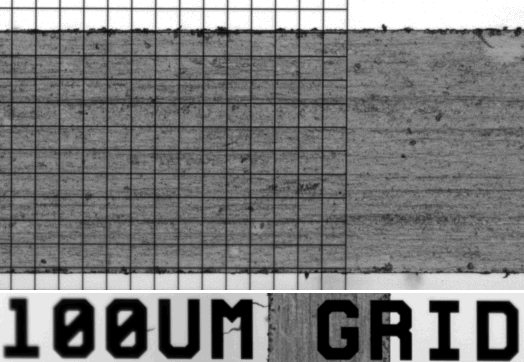
Not to be too OCD, but we also checked using a different 10X lens on a Zeiss AxioObserver which confirmed 1 mm (not shown here).
Specifications on slide box match this measurement.
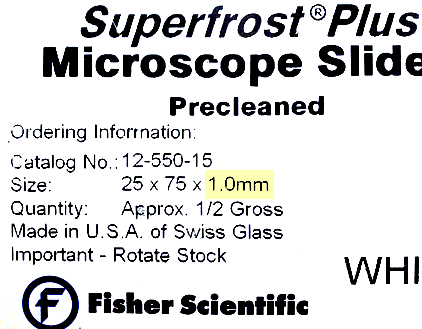
Problem is that when a Z series through the depth of the slide imaged in reflectance mode is viewed in orthagonal mode (XZ reslice), the measurement of depth is too short by approximately 330 um. (Left: 5 um steps measured in Zen; Right: 1 um steps measured in ImageJ.)
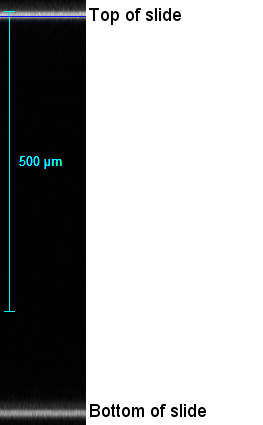

And this measurement appears to confirm the 670 um thickness result.
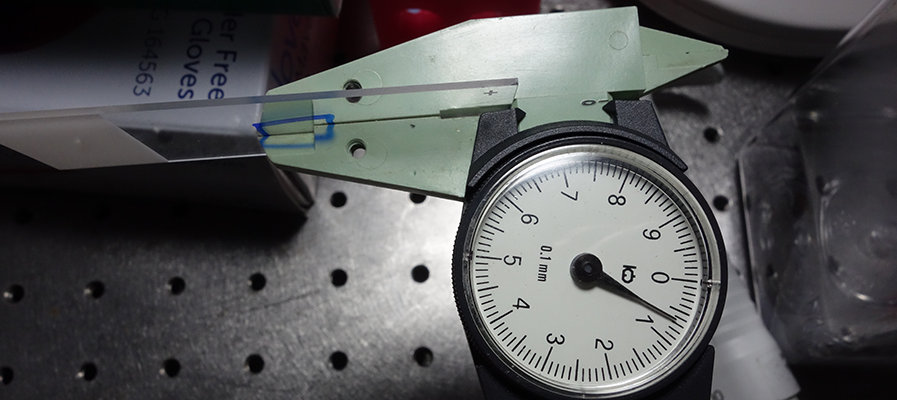
But I think this is wrong. It's a cheap plastic micrometer that cannot be trusted, like these rulers https://www.flickr.com/photos/mcammer/359623958/
Imaging Thorlabs 10 um X 10 um per square grid shows XY calibration of Zeiss 710 with 10X lens ok.
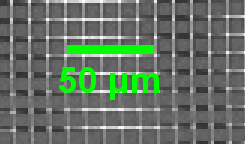
Idea:
Before assembling chamber, coat one side with red or far red beads in poly-L-lysine.
Coat opposing inside surface of chamber with different color beads in
poly-L-lysine.
When dry, assemble chamber.
Image dry (fluor & reflectance). Image from both sides; does thickness of substrate change apparent depth?
Then flow in 3rd color dye (or water), seal sides, and image again.



Result of chamber filled with dye, none of the beads coatings:
Chamber & slide & coverslip distances reported too small. Didn't matter whether sample flipped over.
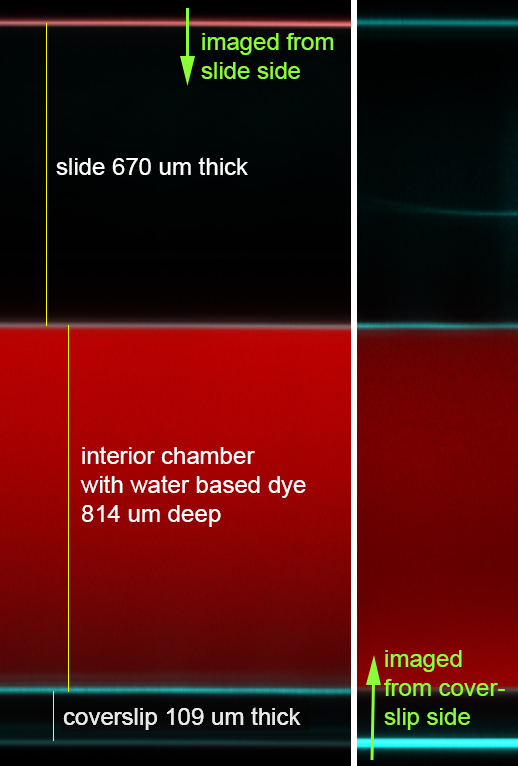
Problem: The coverslip is supposed to be 170 um thick, the slide 1000 um, and the chamber a little over 1000 um.
Z series was collected with advanced options for changing gain in each channel with depth. If there is attenuation of intensity with depth, this is masked.
Following XZ was with constant laser intensity and gain and pinhole at 1 Airy unit through whole Z series. The solution is dilute eosin in water excited at 405 nm & emission with long pass 520 nm.
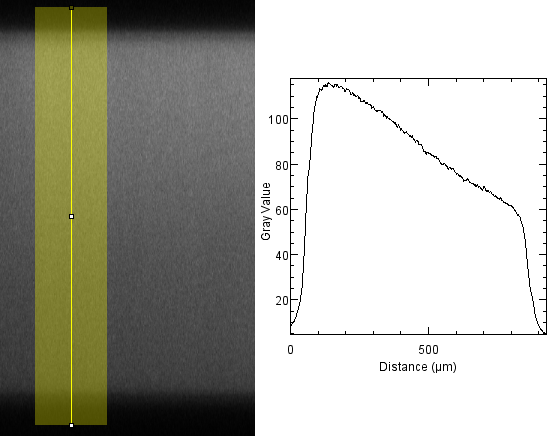
comments, questions, suggestions: Michael.Cammer@med.nyu.edu